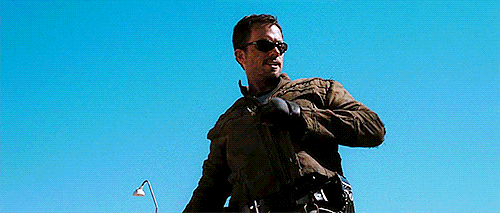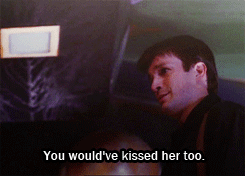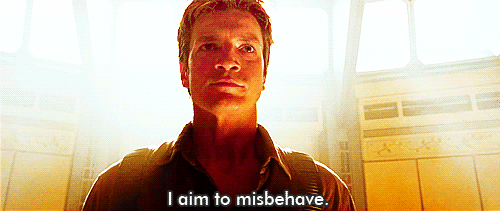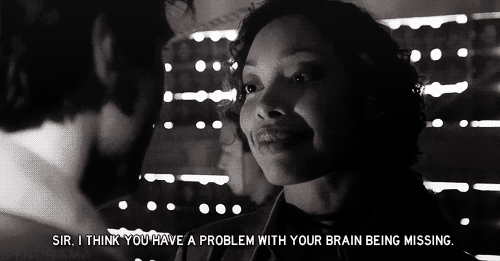There’s a lot of common wisdom out there about how a crit partner (cp) can go about critiquing without being a giant douchecanoe. This is good because there’s no certification process for learning how to crit. I'm certain my critique style is heavily influenced by having done an undergraduate degree in English Lit in which I was frequently asked to analyze capital-‘L’-Literature from a variety of perspectives (oh, Po-Mo, how I heart you). But I don't consider that adequate preparation for the work of thinking critically about something that's still in progress. It was just a starting point.
Most of the posts I’ve seen on the subject of crit revolve around the behavior of a good/bad cp, which easily accounts for half of what it takes to be a good cp. That’s the “partner” part of “critique partner,” and since that ground has been well and truly covered elsewhere, I’m going to continue the conversation by focusing on the “critique” part of “critique partner.”
As I work with my super stellar cps primarily via email, I'm focusing on crit-in-letter form. I can't really speak to the in-person dynamic of crit, but I imagine these still apply.
So! Here are Natalie's top 4 truths of making really good crit with action items and more Firefly gifs:
1. Be the best bad guy you can be.

We all know the sandwich method of critique: this is the good-crit-good school of critique. I think it bears repeating because pointing out the good can be challenging when you’re reading with a critical eye. But it IS important. Not because you need to make the author feel good (though, that’s part of it), but because this is frequently the hard part of a good critique.
It’s easy to look at a piece and find ways in which it could be better; it’s not always so easy to find its strengths especially in drafting stages. But finding the love is where you lay the groundwork of a good critique. If I’m going to tell you that your main character’s emotional arc is missing key beats and is therefore unrealized in the end, then I’d better also be able to tell you that the arc you’re striving for is visible precisely because you’ve established the starting point so well. It's easy to be a bad guy. It's tough to be a good bad guy.
Action item: Make your compliments/encouragements as insightful as your critiques.
2. Navigate the ‘I’.
 This is a tough one because most of us come to writing as readers, and as readers we're encouraged to identify with characters - or, at least, that's what we learn in school. But! In the case of crit, you're not a reader, you're a critiquer, and what you would do is therefor irrelevant.
This is a tough one because most of us come to writing as readers, and as readers we're encouraged to identify with characters - or, at least, that's what we learn in school. But! In the case of crit, you're not a reader, you're a critiquer, and what you would do is therefor irrelevant.
Okay. Maybe not totally irrelevant, but it should probably take a backseat to your analysis of the work. If your gut reaction to something in the text is to argue that it's not believable because you wouldn't behave as the main character did, there's probably a reason, but it doesn't have anything to do with you.
For example. Let's say you were critiquing for me and I gave you a piece about a vampire slaying space cowboy with the ability to download personalities like software and maintain quippy dialogue throughout. And let's say there was a scene in which said vampire slaying space cowboy hides under her bed to escape an invasion of zombies.
Instead of saying, "if I were a vampire slaying space cowboy with the ability to download whatever personality I wanted, I wouldn't hide beneath my bed from something as mundane as zombies," you might practice removing yourself from the equation and consider why that's your reaction. In this case, it might be because I hadn't properly illuminated the fact that this vampire slaying space cowboy had a horrific experience with zombies in her childhood and lacks the confidence needed to meet them face on.
Action item: Read your crit letter for 'I' statements and consider how to restate them in a way that removes you from the picture. Be creative!
3. Aim before you fire.

Once the critical glasses are on, it can be difficult to moderate them. But! Too much of a good thing is like the 4th Indiana Jones movie - people only really remember the first three with fondness.
It's easy to get swept up in the excitement of a good crit. You can see all the things! You can be useful! And brilliant! And point out the universe of problems!
Well. Don't.
This is where it's helpful to know your terrain and pick your battles wisely. This is also a part of critique that is hugely flexible and will shift depending on your relationship with the writer.
Speaking in general terms, a well-aimed crit is worth more than an exhaustive one. If you see a wealth of trouble in a manuscript, it may be best to address only the most salient issues - for example, you might prioritize the character arc over addressing voice, or major plot issues over problems with smaller scenes. In these cases, the bone saw is more useful than the scalpel. Remember: the elements of storytelling are connected and addressing one is, in some ways, addressing all.
Action item: Practice condensing critique notes or demonstrating relationships between them.
4. Be clear. Be concise. Be nice.

Revise your crit letters. Especially in the early stages of working with a new partner, precision is kindness. Take the time to organize your thoughts and make them incisive without abandoning niceties - it's possible to say hard things without being mean, but it definitely takes practice.
Similarly, crit letters aren't soapboxes; there's no need to write a treatise on the inherent fault of zombie/vampire/werewolf mythologies (see aforementioned comment about behaving like a douchecanoe). I promise you this is a surefire way to lose the goodwill of your critique-ee.
Trust that the author knows that zombies/vampires/werewolves can't exist (well....except for zombies), and focus instead on why in the context of their manuscript, the mythology is weak. Which is to say, anyone can tell me my zombies are improbable, but a good cp will tell me why my zombies are unbelievable. A great cp will do that with a single statement and a smile.
Action item: Revise, revise, revise your crit letters just as you did the manuscript.
The thing these all have in common is creativity. We don't usually think about crit as being creative. Critique is the necessarily academic component of writing a novel. It's strict, the disciplinarian of daydreams. It reigns us in and cools us down and counters impossible yes's with irritatingly realistic no's. But. (You knew there was a but.) BUT. (But did you know there were two?) A really good critique does all of that in a way that leaves you burning to try again - to be better than you were last time. A really good critique isn't a monster waiting to swallow your bones, it's the whetting stone there to sharpen your sword.
So, there you have it. How Natalie approaches crit. Again, this has little to do with behaving like a good cp. Behavior is another boat. Or another post if you're interested.

Lots of great, detailed information here! I can tell you must have revised it. ;P
ReplyDeleteWhy, yes, indeed. I even had a cp read over it before posting. ;)
DeleteYou are the smartest person I know.
ReplyDeleteI feel defeated. Because I can't come up with a smart response. Here. Have a heart. <3
Delete